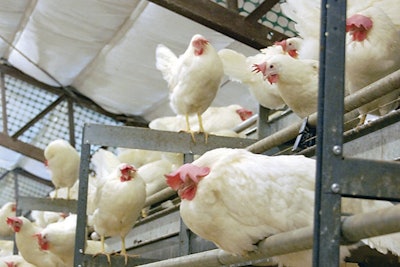
The number of hens housed cage-free in the U.S., excluding organic, has increased from 8.5 million in 2014 to 29.0 million in 2017, a 241 percent increase, according to USDA estimates. In spite of the large number of pledges by restaurant chains, food service distributors, retail outlets and food companies to purchase only cage-free eggs by some future date, but the demand for cage-free eggs has not kept up with the increase in supply. As a result, both Cal-Maine Foods and Rose Acre Farms, the country’s two largest egg producers, both announced adjustments to their cage-free programs.
During its earnings report for the first quarter of fiscal year 2018, released on October 2, 2017, Cal-Maine Foods’ CEO Dolph Baker said that because the supply of cage-free eggs is not consistent with the demand, the company has adjusted its cage-free egg production levels in line with the current customer demand. Also in October, Rose Acre Farms announced that it was at least temporarily discontinuing the addition of cage-free laying systems, or as CEO Marcus Rust put it, the company is “shutting [its] construction program down.”
In contrast, then Michael Foods Inc. Post Holdings CEO Robert V. Vitale said he feels “very comfortable” with the way its Michael Foods subsidiary is matching the production of cage-free egg products with the demand. “We are moving along with our customers and trying to be supportive of their overall initiatives in this area, so our capacity is very nicely matched against the demands,” Vitale said while speaking during a November 17 conference call. Michael Foods is one of the largest egg products companies in the world and is not a significant supplier of retail shell eggs.
The Top 6 U.S. egg producers
Cal-Maine Foods retains its place at the top of Egg Industry’s Top Egg Company rankings with 40.10 million head of hens housed on December 31, 2017. In addition to being the largest egg producer in the U.S., Cal-Maine is also the largest egg producer in the world according to WATT’s Top Poultry Company rankings.
Rose Acre Farms, Hillandale Farms, and Versova Holdings remain in the second, third and fourth positions in the rankings with 26.90, 16.73 and 16.40 million head of hens, respectively.
Daybreak Foods, with 12.80 million head of hens, rose up to the fifth spot in this year’s rankings from the sixth spot last year. Rembrandt Foods fell to sixth in the rankings since its hen numbers decreased from 14.70 million head on December 31, 2016 to 12.50 million head at the end of 2017.
The Top Egg Company survey is conducted annually, and the results reported are composed of a combination of company-submitted information and estimates made based on input from publicly reported information and industry sources. The survey reports on the number of hens housed on Dec. 31, 2017. The report includes 63 companies with a collective 314.6 million hens. The December 22, 2017, USDA Chicken and Egg Report estimated that there were 319.7 million table egg type laying hens in the U.S. on December 1, 2017.
Industry concentration
The level of concentration of the U.S. egg industry hasn’t changed much in the last four years. In the 2015 survey, the top five egg producers controlled the output of 34 percent of the hens reported in the Top Egg Company Survey. In the 2018 survey, the top five egg producers controlled the output of 36 percent of the survey’s hens. The amount of the country’s hens housed by the top 10 egg producers has increased from 50 percent in 2015 to 53 percent in 2018.
Disaster losses in 2017
Fire and storms caused some significant losses of housing and birds for U.S. egg producers in 2017. On April 4, 2017, Opal Foods suffered significant losses because of a storm that hit its egg operations in Neosho, Missouri. The company lost three poultry houses to straight-line winds. An estimated 600,000 chickens inside those houses were also lost. It was estimated that it will cost about $2.4 million to replace the lost structures and an additional $4 million to replace the lost hens.
Hillandale Farms lost a barn and more than 100,000 hens in a fire that occurred July 1 at a company facility in Tyrone Township, Pennsylvania. Hi-Grade Egg Producers facilities near North Manchester, Indiana were damaged by fire on October 2, 2017. More than one million of the 2.7 million hens on the site died in the egg farm fire. Hi-Grade Egg Producers is operated by Midwest Poultry Services, and the company has announced its intentions to rebuild.


















